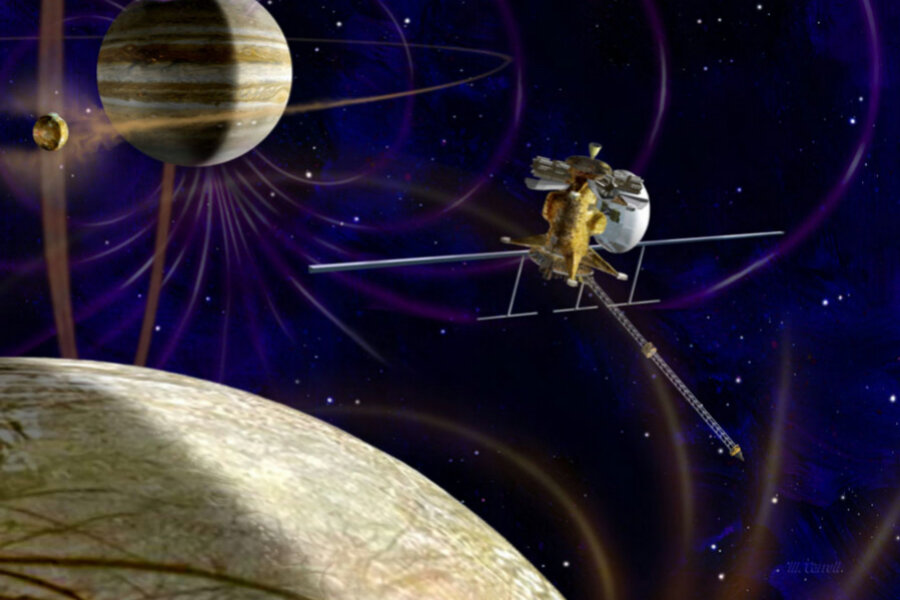NASA's 2016 budget sets its sights on Europa
Loading...
In Arthur C. Clarke’s novel “2010: Odyssey Two,” the sequel to the famous “2001: A Space Odyssey,” aliens inhabiting the planet Jupiter send a message to an expedition from Earth. “All these worlds are yours except Europa. Attempt no landing there.”
But this week Congress gave NASA a mandate to do just that. Don’t just visit Europa, Congress told NASA. Land there.
Europa is thought to be one of the most likely places in the solar system to host extraterrestrial life. Underneath its scarred, frozen surface is an ocean of liquid water that encircles the moon. Scientists say this ocean could be home to microbes that get energy from chemicals rather than from sunlight. If a mission to Europa confirms extraterrestrial life living in the ocean, it would lead to new discoveries about how the solar system, and life within it, formed.
NASA’s budget for 2016 is $19.2 billion, with $1.63 billion earmarked for planetary science and $175 million specifically for the "Jupiter Europa clipper mission."
The legislation that provides the money states that “this mission shall include an orbiter with a lander that will include competitively selected instruments.” That means Congress has officially tasked NASA with developing a craft that can orbit Europa, and a lander that can detach and reach the moon's surface.
What would such a lander look like? Some scientists have suggested small “cubesats” that could sample plumes of steam emanating from the moon’s surface. But to really study Europa, NASA needs to break at least partway through the moon’s icepack, closer to the ocean beneath. That means sending a “soft lander” craft that can locate a crevasse on the moon’s surface. Scientists at NASA’s Jet Propulsion Laboratory think the best way to deliver a lander without damaging delicate scientific instruments is with a sky crane similar to the one used to deposit the Curiosity rover safely on Mars.
Once on the surface of Europa, the lander would use small saw blades to collect ice samples from several inches below the surface. If it can reach a crevasse, it could use other instruments in its payload to learn about the composition of the ocean beneath – and, possibly, about microbes living there. The lander could probably last 10 days on Europa’s surface before it succumbs to the harsh radiation surrounding Jupiter, Ars Technica’s Eric Berger reports.
NASA’s current timeline calls for a Europa mission to launch in 2022, arriving by Jupiter either three years later (if it heads directly there) or six years later (if it first swings around Venus for a gravity assist). That doesn’t give NASA much time to design the lander, but it also won’t be the first time humans have attempted a landing in the outer solar system. In 2005, the Huygens craft separated from the Cassini orbiter and touched down on Saturn’s moon Titan, sending back data to the orbiter for about 90 minutes before its batteries ran dry.






